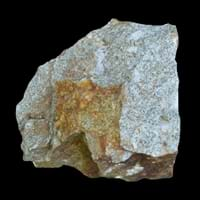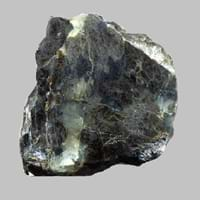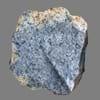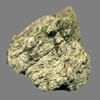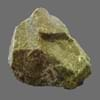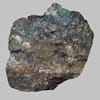Definition
Tonalite is a coarse-grained plutonic rock consisting mainly of sodic plagioclase, quartz, and hornblende or other mafic minerals with phaneritic texture
Pyroxenite is a dark, greenish, granular intrusive igneous rock consisting mainly of pyroxenes and olivine
Origin
Tonale, Italy
Unknown
Discoverer
Unknown
Unknown
Etymology
From Tonale Pass, northern Italy, + -ite1
From pyro- fire + Greek xenos stranger as the mineral group was new to igneous rocks
Class
Igneous Rocks
Igneous Rocks
Sub-Class
Durable Rock, Hard Rock
Durable Rock, Hard Rock
Other Categories
Coarse Grained Rock, Fine Grained Rock, Medium Grained Rock, Opaque Rock
Coarse Grained Rock, Opaque Rock
Texture
Phaneritic
Clastic, Granular, Phaneritic, Porphyritic
Color
Black, Brown, Light to Dark Grey, White
Black to Grey, Bluish - Grey, Dark Greenish - Grey, Green, Light Greenish Grey
Durability
Durable
Durable
Scratch Resistant
Yes
Yes
Appearance
Banded and Foilated
Layered, Banded, Veined and Shiny
Interior Uses
Decorative Aggregates, Entryways, Flooring, Homes, Interior Decoration
Countertops, Decorative Aggregates, Interior Decoration, Kitchens
Exterior Uses
As Building Stone, As Facing Stone, Paving Stone, Garden Decoration, Office Buildings
As Building Stone, As Facing Stone
Other Architectural Uses
Curbing
Curbing
Construction Industry
As Dimension Stone, Cement Manufacture, Cobblestones, Construction Aggregate, for Road Aggregate
As Dimension Stone, Building houses or walls, Cement Manufacture, Construction Aggregate, for Road Aggregate
Medical Industry
Not Yet Used
Not Yet Used
Antiquity Uses
Artifacts, Sculpture
Artifacts
Commercial Uses
Cemetery Markers, Creating Artwork
Cemetery Markers, Commemorative Tablets, Laboratory bench tops, Jewelry, Sea Defence, Tombstones
Types
Dacite
Clinopyroxenites, Orthopyroxenites and Websterites
Features
Is one of the oldest rock, Typically speckled black and white.
Generally rough to touch, Host rock for Diamond, Is one of the oldest rock
Archaeological Significance
Monuments
Not Yet Used
Not Yet Used
Famous Monuments
Not Applicable
Not Applicable
Sculpture
Used
Not Yet Used
Famous Sculptures
Data Not Available
Not Applicable
Pictographs
Not Used
Not Used
Petroglyphs
Not Used
Not Used
Figurines
Used
Not Yet Used
Formation
When alkali feldspar is extracted from granite, it changes to granitoid and later, it becomes tonalite with quartz as major mineral.
Pyroxenites are ultramafic igneous rocks which are made up of minerals of the pyroxene group, such as augite and diopside, hypersthene, bronzite or enstatite.
Mineral Content
Albite, Amphibole, Apatite, Biotite, Feldspar, Hornblade, Ilmenite, Magnetite, Manganese Oxides, Olivine, Plagioclase, Pyroxene, Quartz, Sulfides, Titanite, Zircon
Amphibole, Augite, Bronzite, Chromite, Diopside, Enstatite, Garnet, Hornblende, Hypersthene, Magnetite, Pyroxene
Compound Content
NaCl, CaO, MgO, Silicon Dioxide
Aluminium Oxide, CaO, Chromium(III) Oxide, Iron(III) Oxide, Potassium Oxide, MgO, Sodium Oxide, Silicon Dioxide, Sulfur Trioxide
Types of Metamorphism
Burial Metamorphism, Cataclastic Metamorphism, Contact Metamorphism, Hydrothermal Metamorphism, Impact Metamorphism, Regional Metamorphism
Burial Metamorphism, Impact Metamorphism, Regional Metamorphism
Types of Weathering
Biological Weathering, Chemical Weathering, Mechanical Weathering
Biological Weathering, Chemical Weathering, Mechanical Weathering
Types of Erosion
Wind Erosion
Chemical Erosion, Coastal Erosion, Water Erosion
Grain Size
Medium to Fine Coarse Grained
Coarse Grained
Fracture
Conchoidal
Uneven
Streak
Bluish Black
White, Greenish White or Grey
Porosity
Very Less Porous
Less Porous
Luster
Subvitreous to Dull
Dull to Vitreous to Submetallic
Cleavage
Not Available
Irregular
Toughness
2.1
Not Available
Specific Gravity
2.86-3
3.2-3.5
Transparency
Opaque
Opaque
Density
2.73 g/cm3
3.1-3.6 g/cm3
Specific Heat Capacity
Not Available
Resistance
Heat Resistant, Pressure Resistant, Water Resistant
Impact Resistant, Pressure Resistant, Wear Resistant
Deposits in Eastern Continents
Asia
Not Yet Found
India, Russia
Africa
Egypt
South Africa
Europe
Finland, Germany, Italy, Romania, Sweden, Turkey
Germany, Greece, Italy, Scotland, Turkey
Others
Not Yet Found
Greenland
Deposits in Western Continents
North America
USA
Canada, USA
South America
Argentina, Bolivia, Chile, Colombia, Ecuador, Peru
Brazil, Colombia, Venezuela
Deposits in Oceania Continent
Australia
New Zealand, South Australia, Western Australia
New Zealand, Queensland
All about Tonalite and Pyroxenite Properties
Know all about Tonalite and Pyroxenite properties here. All properties of rocks are important as they define the type of rock and its application. Tonalite and Pyroxenite belong to Igneous Rocks.Texture of Tonalite is Phaneritic whereas that of Pyroxenite is Clastic, Granular, Phaneritic, Porphyritic. Tonalite appears Banded and Foilated and Pyroxenite appears Layered, Banded, Veined and Shiny. The luster of Tonalite is subvitreous to dull while that of Pyroxenite is dull to vitreous to submetallic. Tonalite is available in black, brown, light to dark grey, white colors whereas Pyroxenite is available in black to grey, bluish - grey, dark greenish - grey, green, light greenish grey colors. The commercial uses of Tonalite are cemetery markers, creating artwork and that of Pyroxenite are cemetery markers, commemorative tablets, laboratory bench tops, jewelry, sea defence, tombstones.
